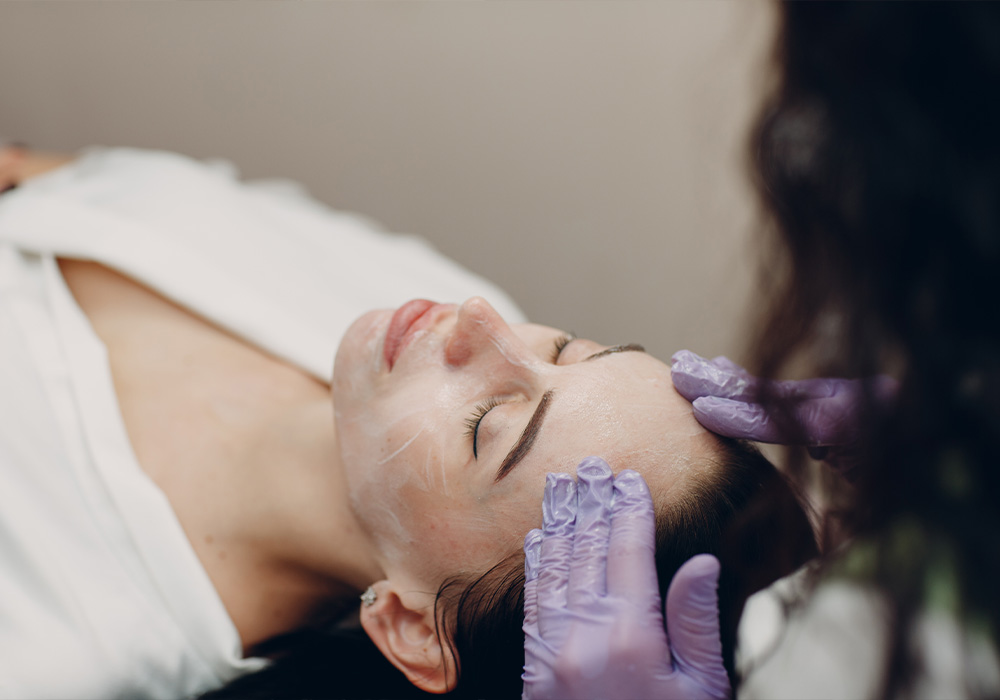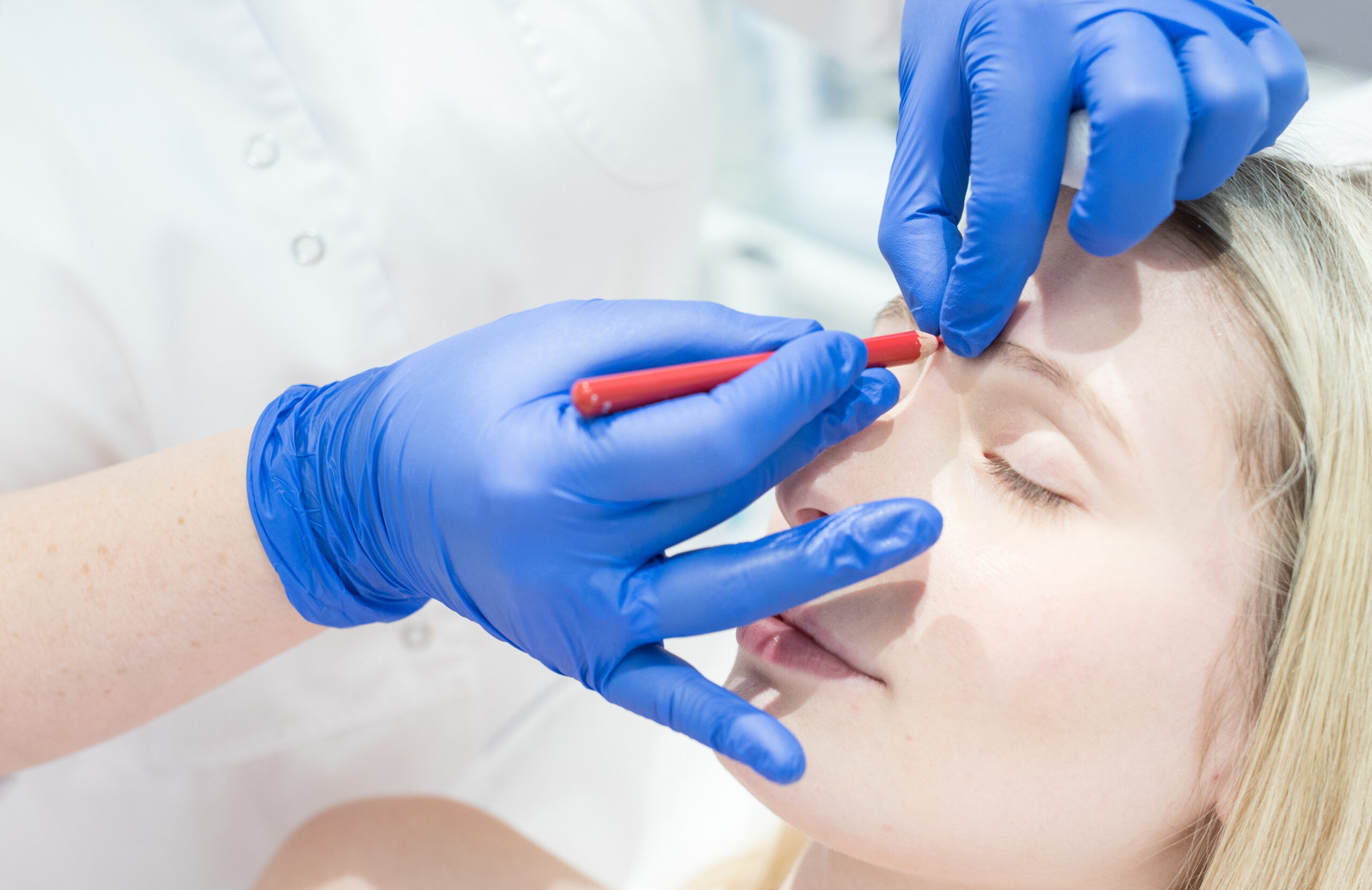When photos of Kylie Jenner at Paris Fashion Week began to circulate online, people began to speculate that it was due to fillers. Critics on social media claimed that her filler had aged her, with some describing her face as “a cautionary tale” about the aging potential of fillers. That criticism sparked a conversation online about filler migration and whether it could lead to an aged or unnatural look.
Since the popularity of cheek, lip and jawline filler, these treatments have emerged as a cornerstone of cosmetic surgery, offering people an option for contouring, reshaping and diminishing the signs of aging without going under the knife. The fact that they’re temporary only adds to the spirit of experimentation, giving one an option to enhance and alter without major consequences. However, comments about filler migration have stirred curiosity and concern. What really happens when injected filler doesn’t stay put?
What is filler migration?
Filler migration refers to the movement of dermal filler from its original injection site to another area of the body. “Filler migration is actually a very rare occurrence,” adds New York facial plastic surgeon Konstantin Vasyukevich, MD. “Hyaluronic acid fillers can move only within the short period of time after injection when the pressure is applied to the area. Experienced injectors often take advantage of this effect and apply mild pressure to ‘mold’ the filler to a desired contour. After a few days, the filler will integrate into the surrounding tissue and is unable to move—at least in any significant quantity.”
While filler migration is rare, it can occur due to various factors such as injecting too much filler at once, injections performed too close together, or improper placement of injections. New York facial plastic surgeon Dilip D. Madnani, MD, says this phenomenon arises from a variety of factors. “Many factors can contribute, such as patient anatomy, filler choice and injection technique. There is no singular cause of migration.”
“Though it can happen on any area of your face, it is most noticeable on parts of the face where the skin is thin such as under the eyes or on the upper lip,” adds Palo Alto, CA facial plastic surgeon Sachin S. Parikh, MD. “Filler can migrate in any direction depending on how and where the filler is placed. In the lip, we typically see it moving upward.”
Does it go away?
The resolution of filler migration hinges on several circumstances. While some cases may resolve spontaneously over time as the filler degrades and undergoes metabolic processes, others may necessitate intervention. Dr. Parikh explains, “The active ingredient in fillers, hyaluronic acid, decomposes and is metabolized by the body over time. In some cases, doing nothing and allowing the filler to dissipate naturally is an option.”
How do you know if your filler has migrated?
Identifying filler migration poses a challenge, particularly for those unversed in facial anatomy nuances. If you suspect your filler has migrated, look for common indicators including asymmetry, lumps or nodules, disproportionate fullness and alterations in facial contours. It’s best to consult a board-certified expert injector who can asses the situation explains Dr. Vasyukevich. “It’s not the filler itself that migrates; rather, it’s the resultant swelling that may give the impression of misplaced filler.”
Which fillers are most likely to migrate?
While filler migration can manifest with any type of dermal filler, hyaluronic acid fillers frequently come under scrutiny due to their hydrophilic properties, which can exacerbate swelling and displacement. Palo Alto, CA facial plastic surgeon David Lieberman, MD notes, “While filler migration is real, it is getting rarer as each new generation of dermal fillers comes out. As crosslinking technology improves and the consistency gets softer and more supple, fillers can hold their shape while maintaining appropriate softness and texture. However, filler migration can happen when it is injected into the incorrect tissue plane. Migration can also happen when previously placed product draws water from the skin and presents differently as it occupies more space.”
How soon after filler can you see migration occur?
The onset of filler migration varies among individuals and hinges on factors like filler formulation, injection technique and tissue response. While some individuals may notice migration shortly after the procedure, others may experience a gradual evolution of symptoms over time. Dr. Vasyukevich emphasizes the role of swelling in masking filler migration. “Swelling induced by filler placement can create the illusion of migration, typically manifesting in a downward trajectory,” he says.
How can you reverse it?
In cases of filler migration, swift intervention is imperative. Dr. Madnani advises, “Dissolving migrated filler before considering additional filler placement is paramount.” An injectable filler dissolver called hyaluronidase can be used to reverse filler migration by enzymatically breaking down hyaluronic acid fillers.
However, it’s important to note that some patients have experienced adverse reactions such as burning pain, facial drooping, and increased skin laxity, so it’s important to go to a qualified physician.
Can you prevent it?
While there’s no surefire way to prevent filler migration, Dr. Vasyukevich underscores the importance of injector expertise. “Unfortunately, this problem cannot be completely eliminated, but the chances of it happening can be minimized. Injecting a moderate amount of filler in small increments, carefully monitoring the depth of injections and recognizing the early signs of ‘filler migration’ from previous injections can help to limit this side effect.”
Dr. Lieberman adds that it’s all about technique. “Accurate placement in the targeted tissue layer helps minimize the risk of migration,” he says. “Also, injecting fillers in multiple layers allows fillers to interact on different tissue planes which provides more structure and contributes to a more natural appearance.”

















